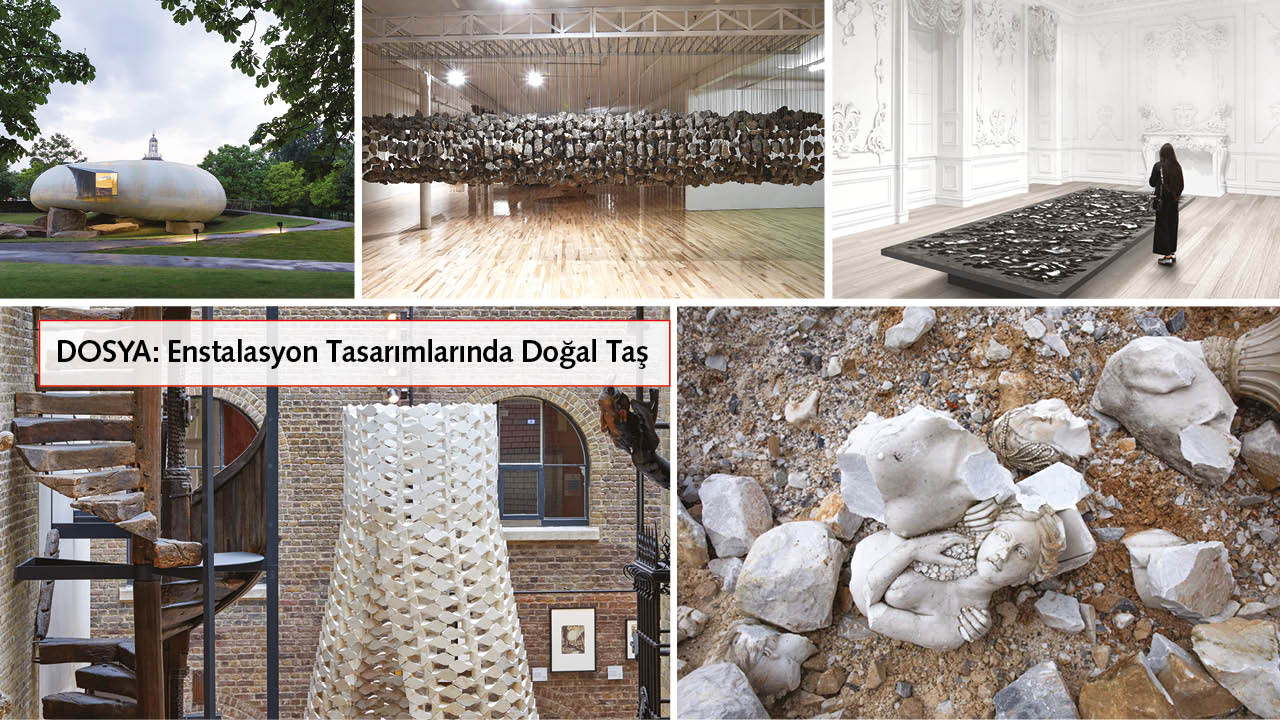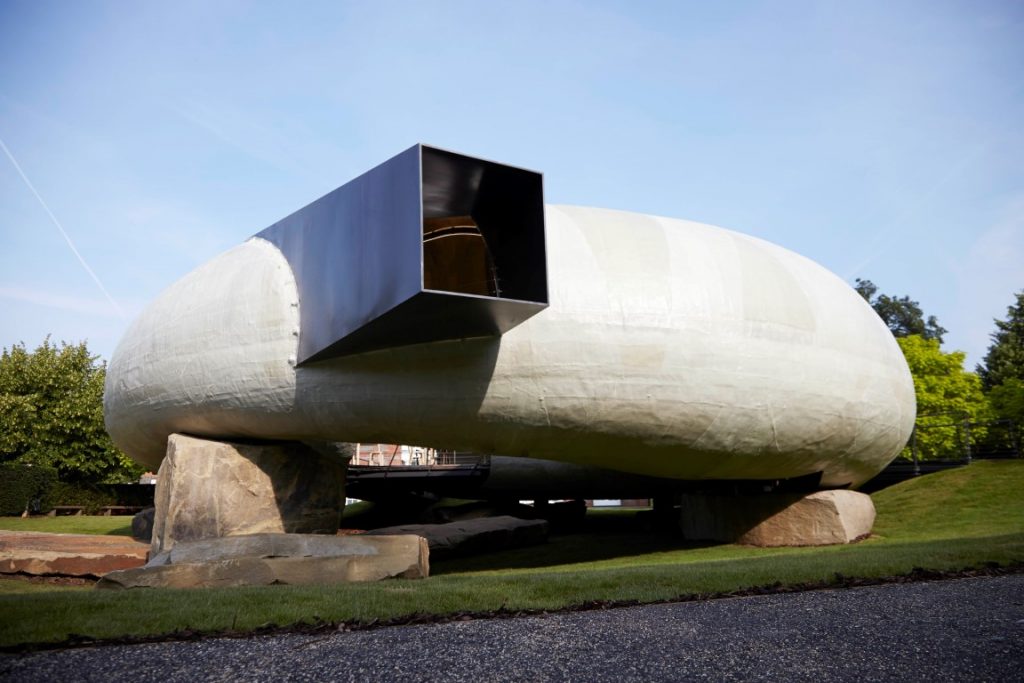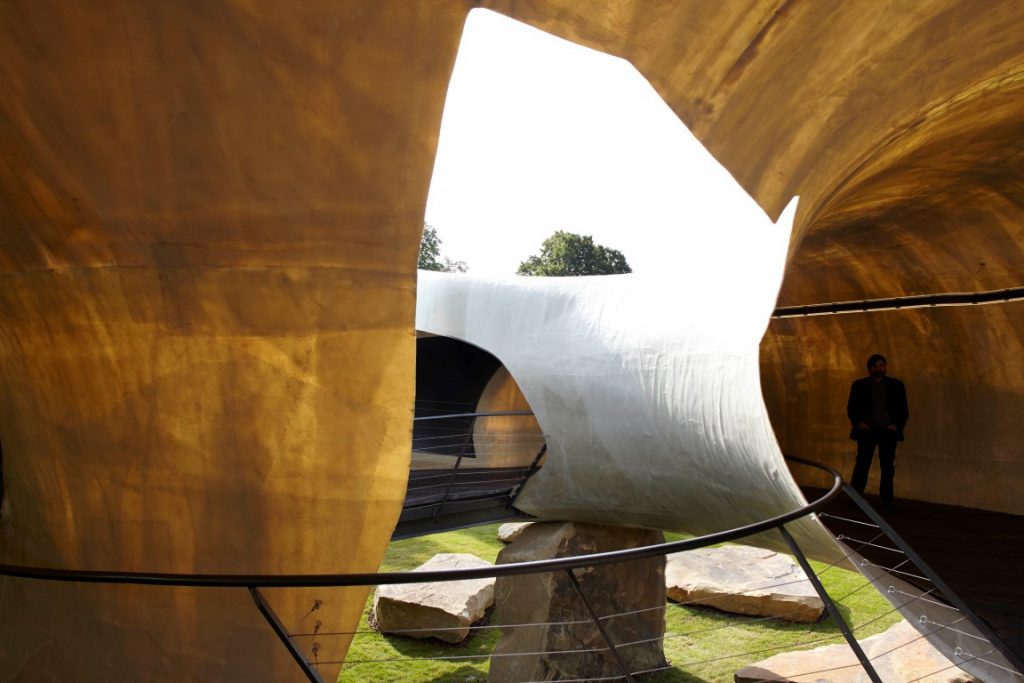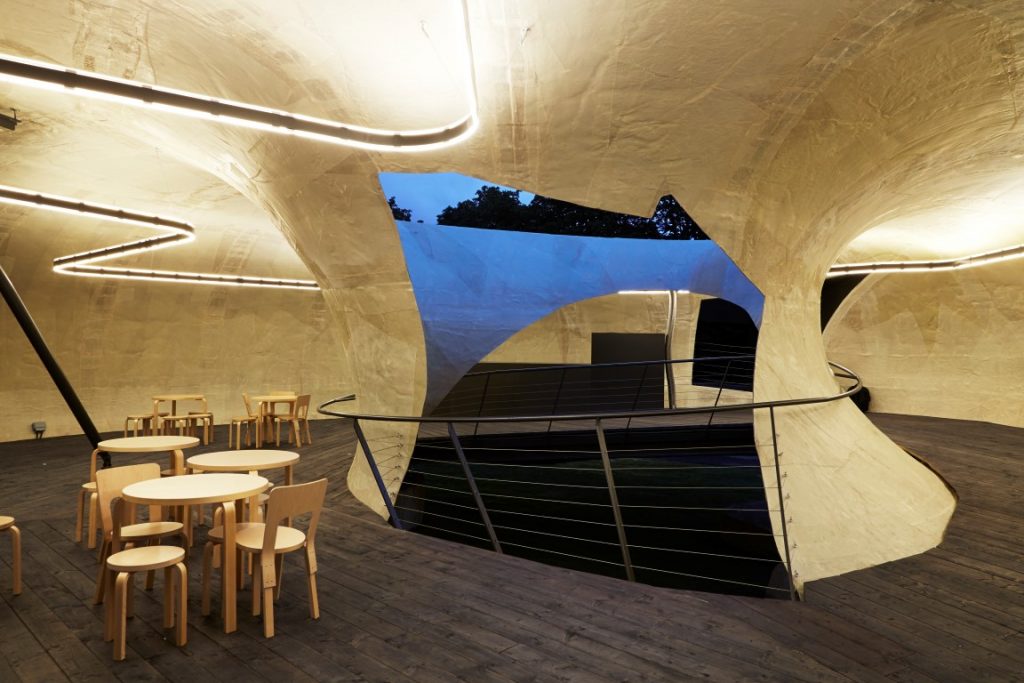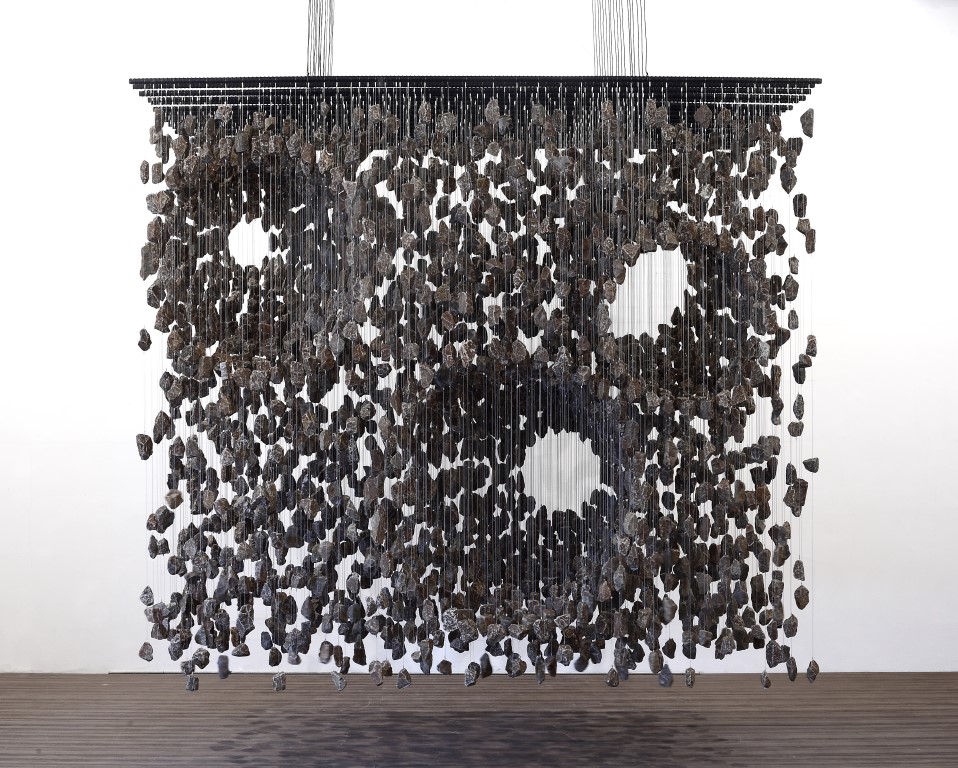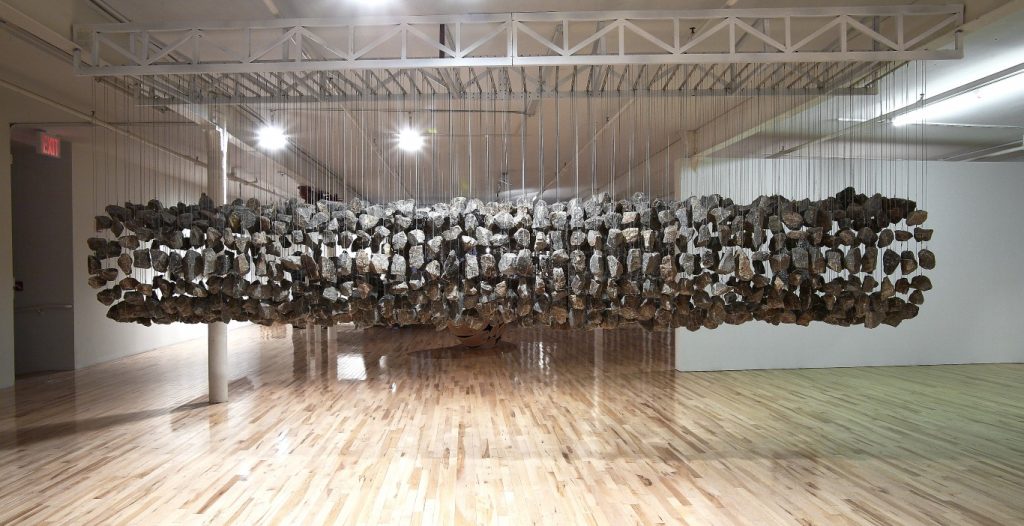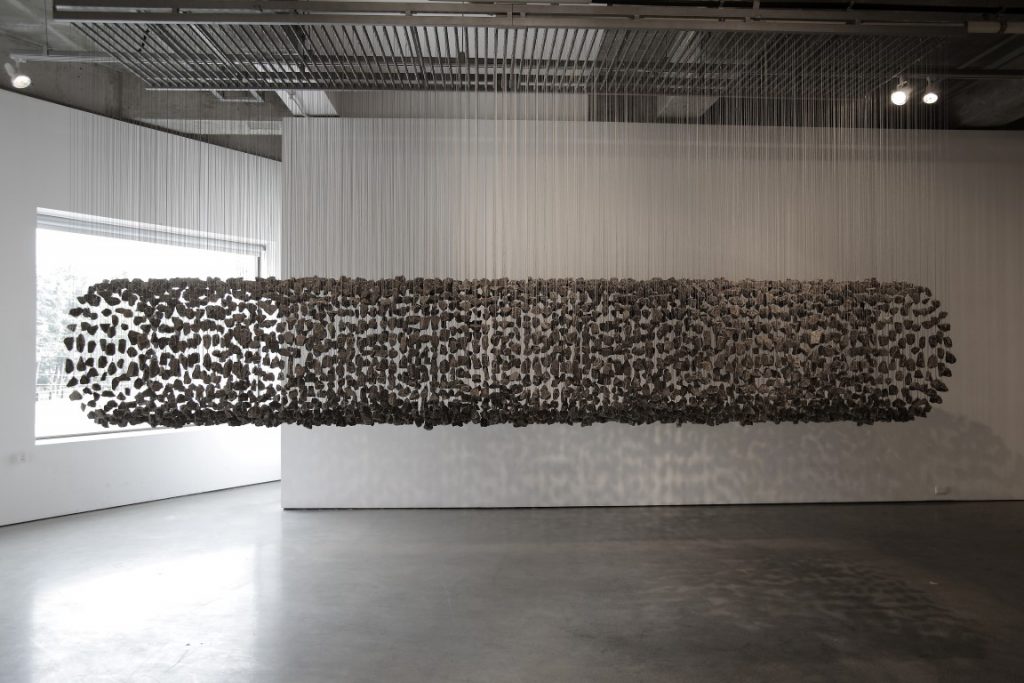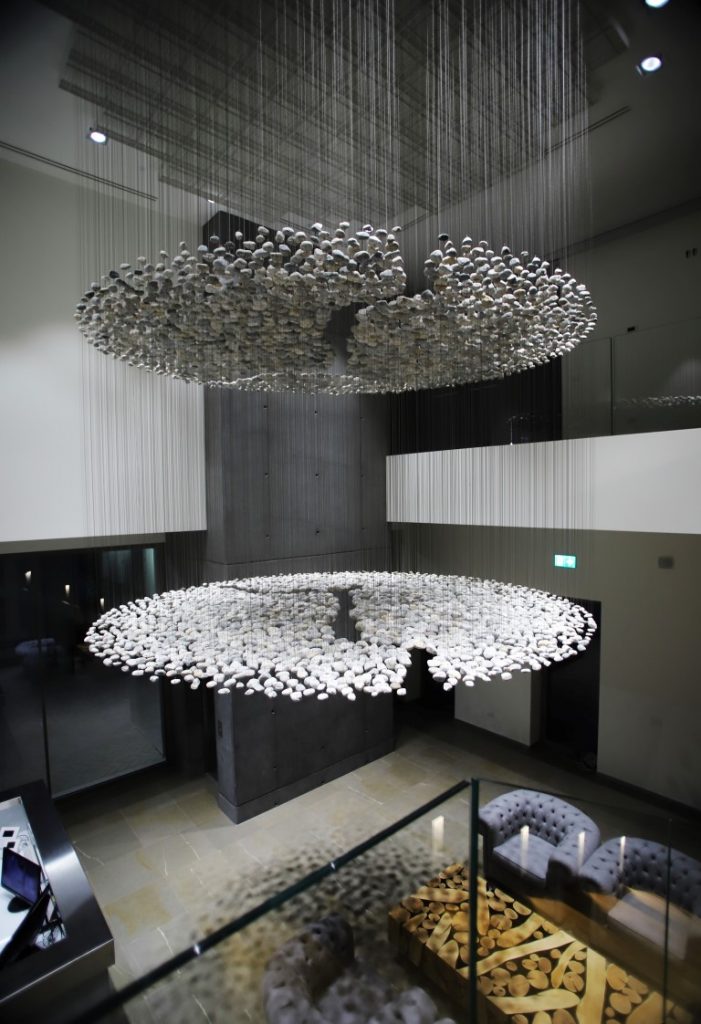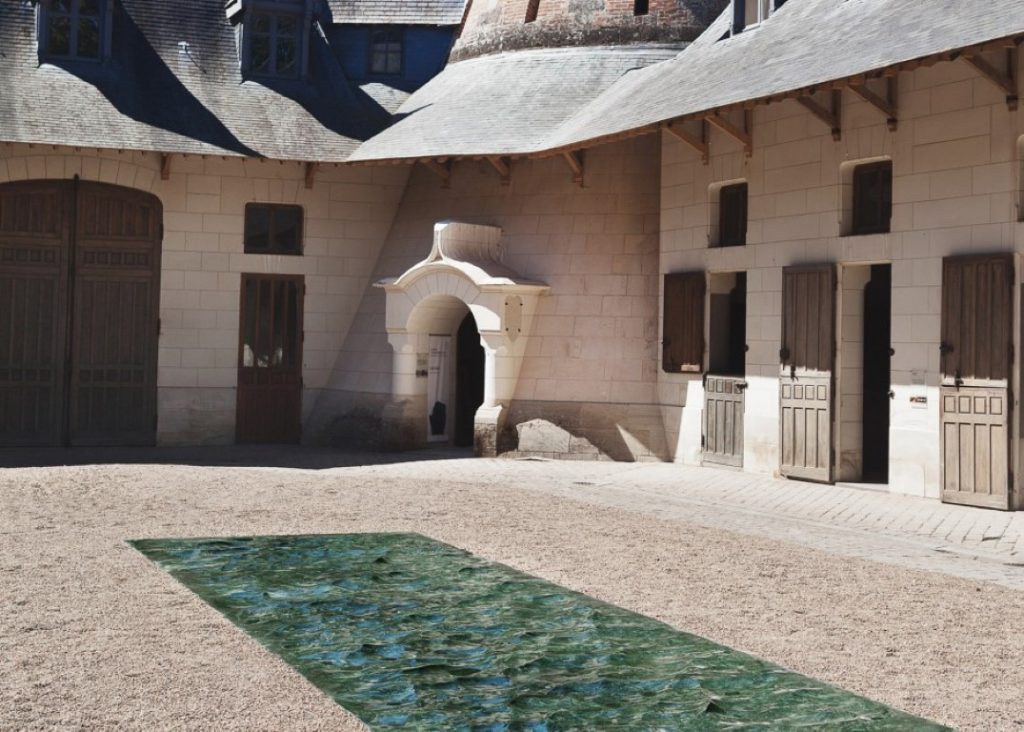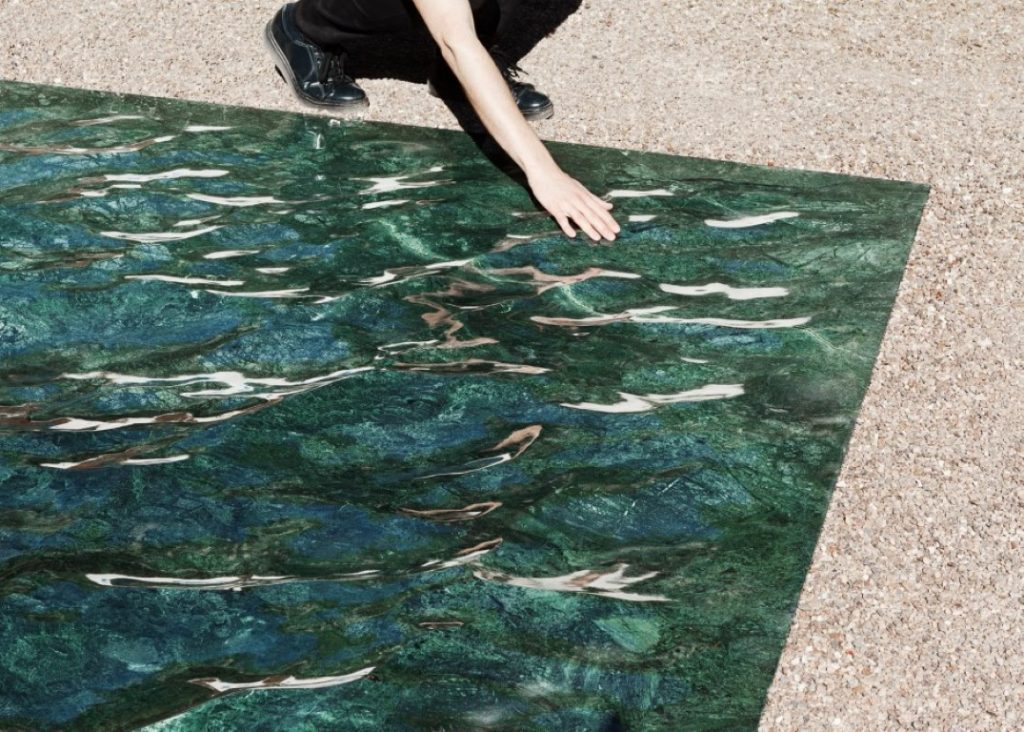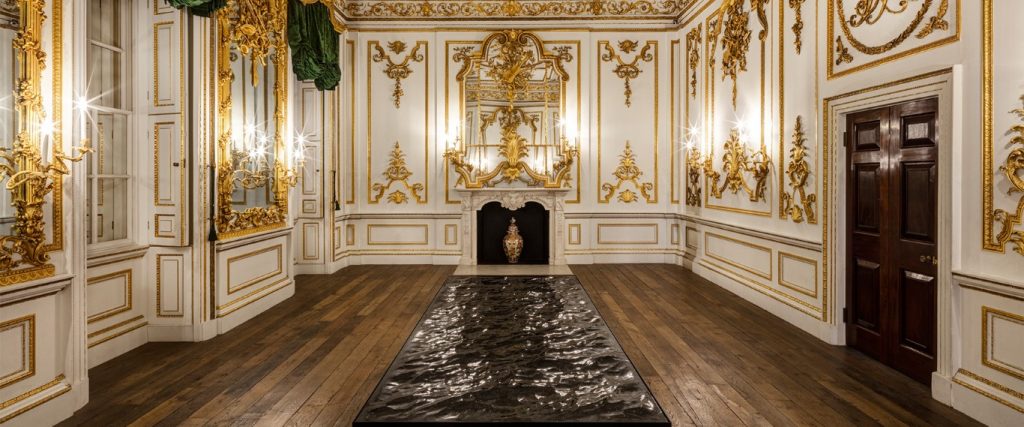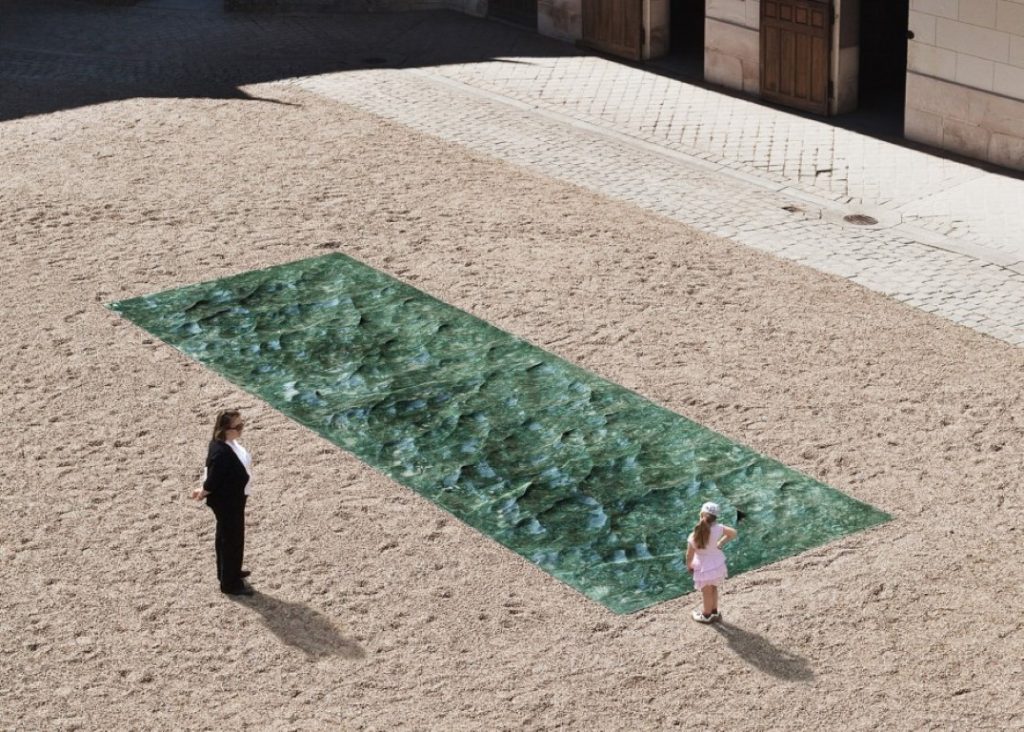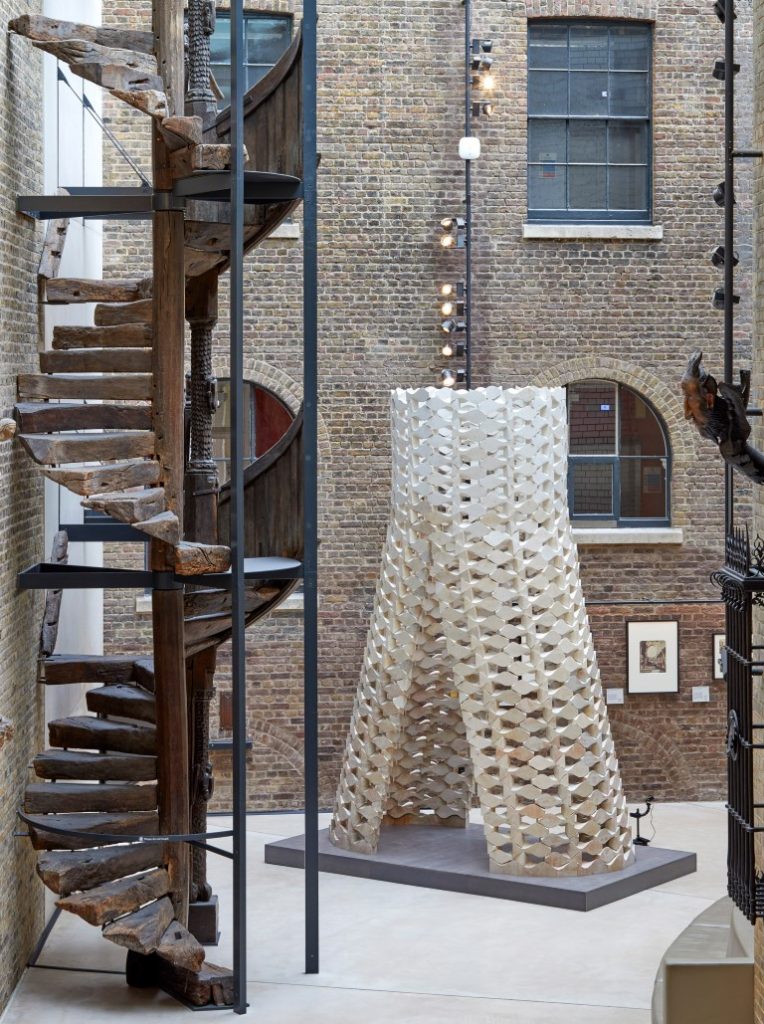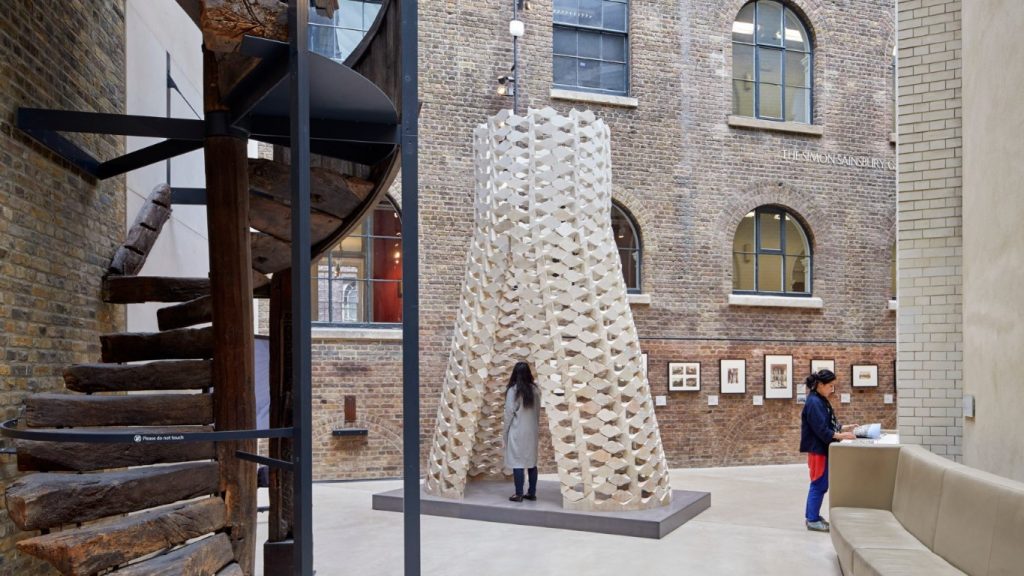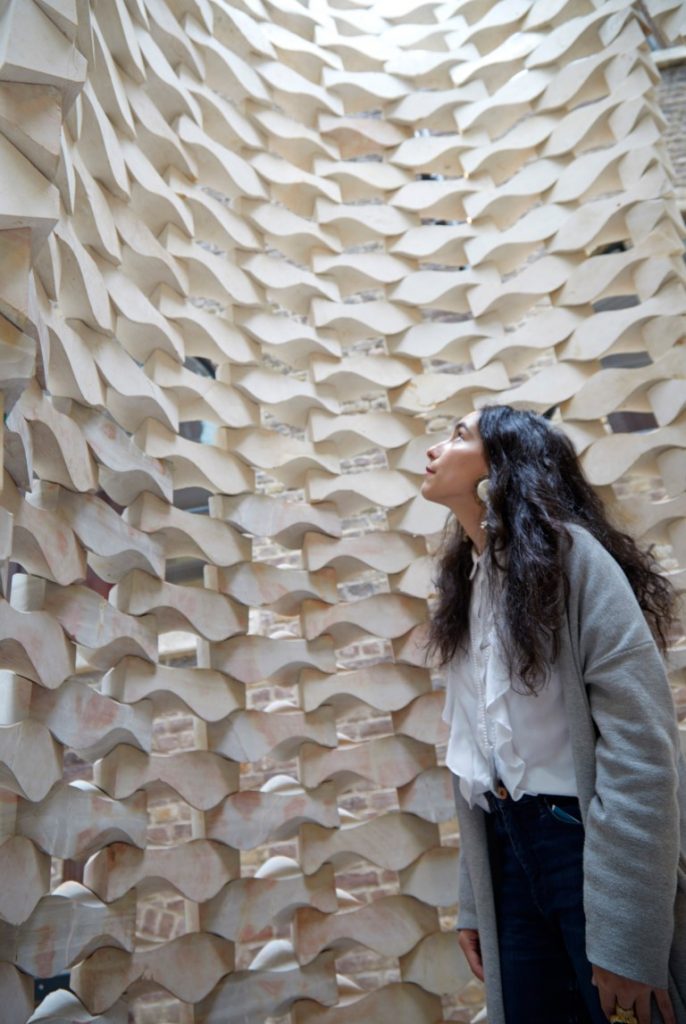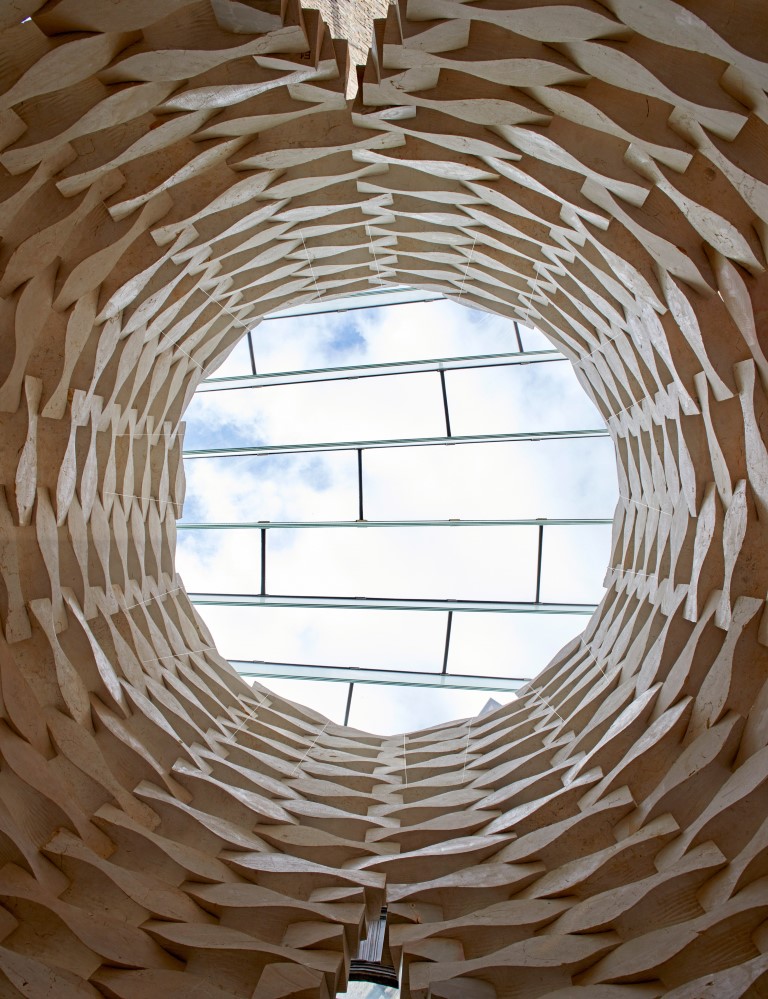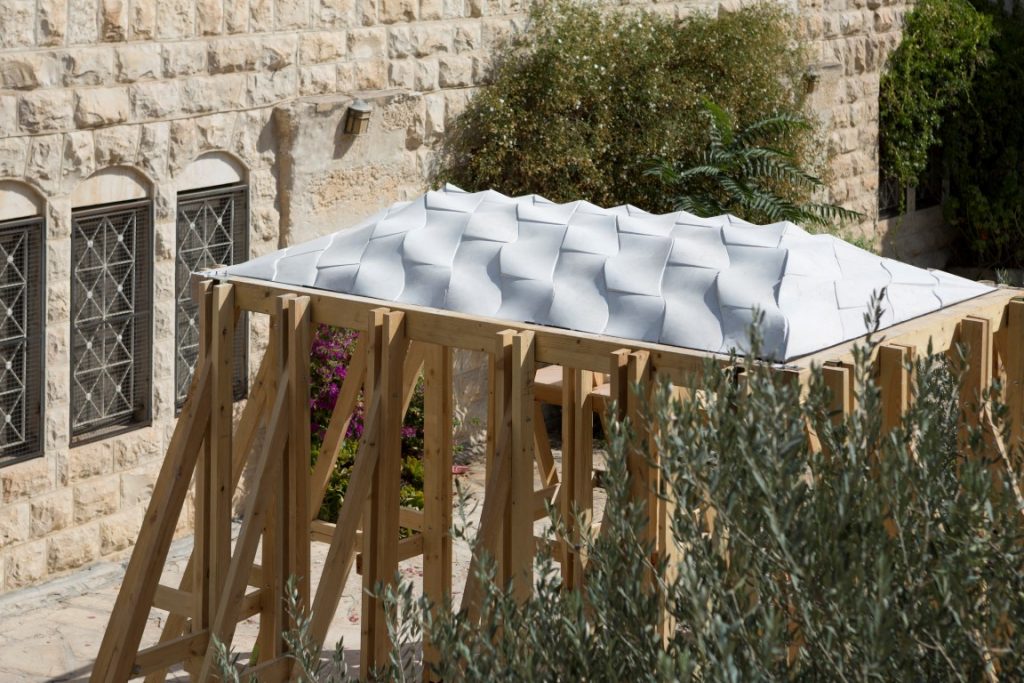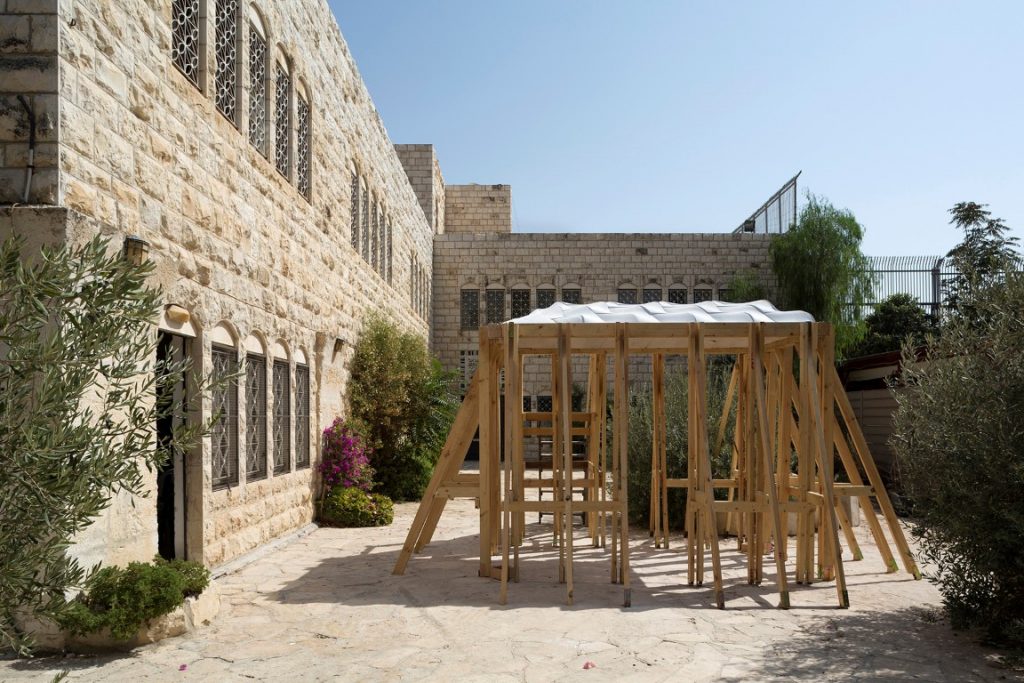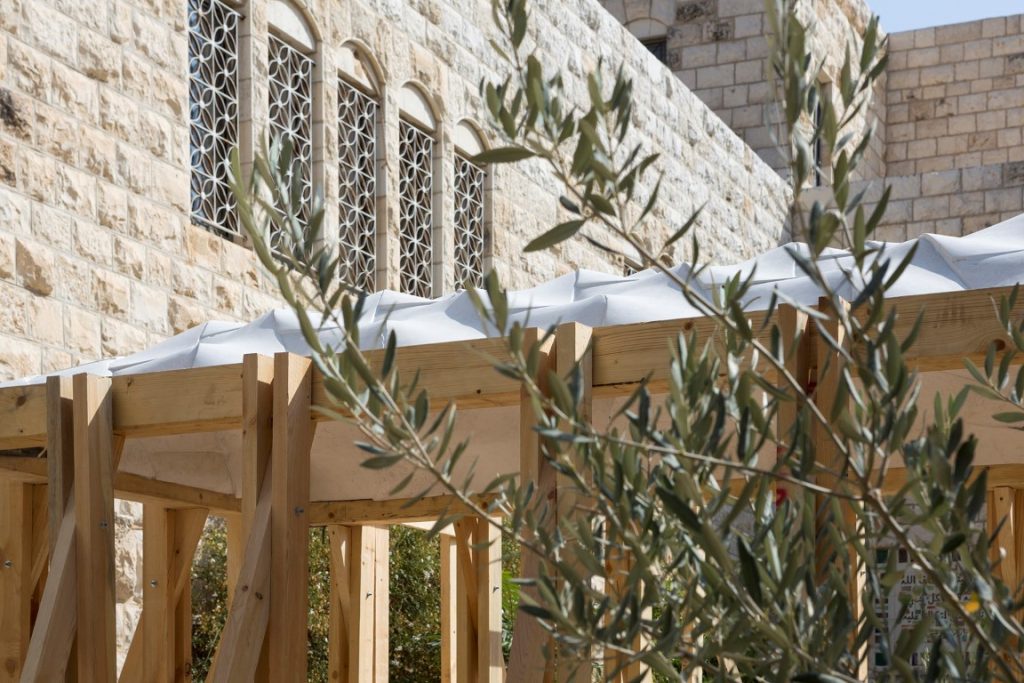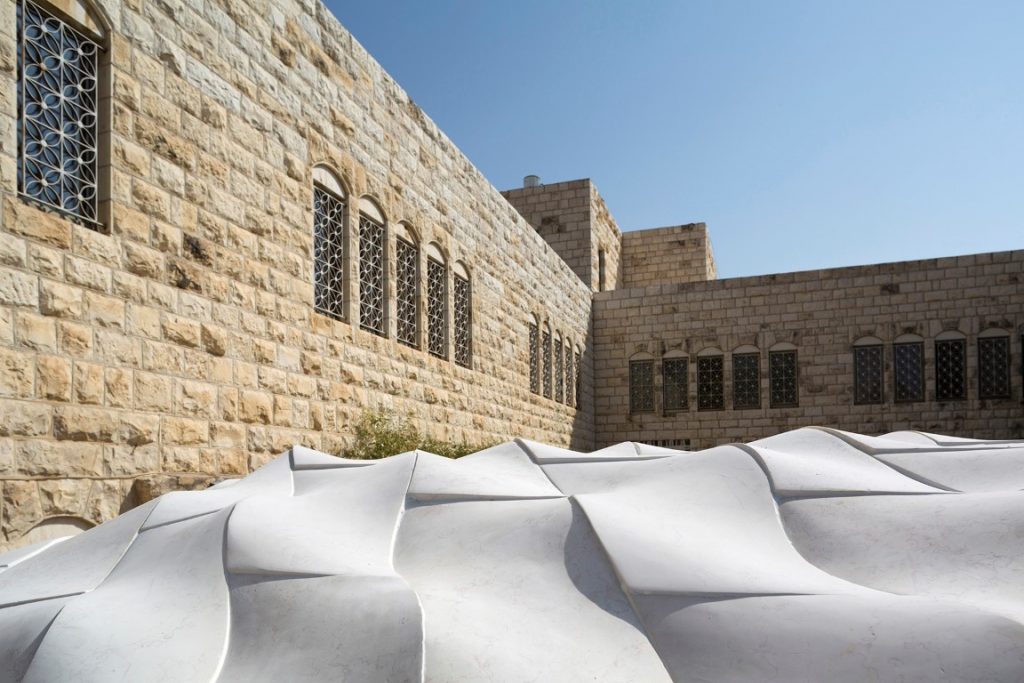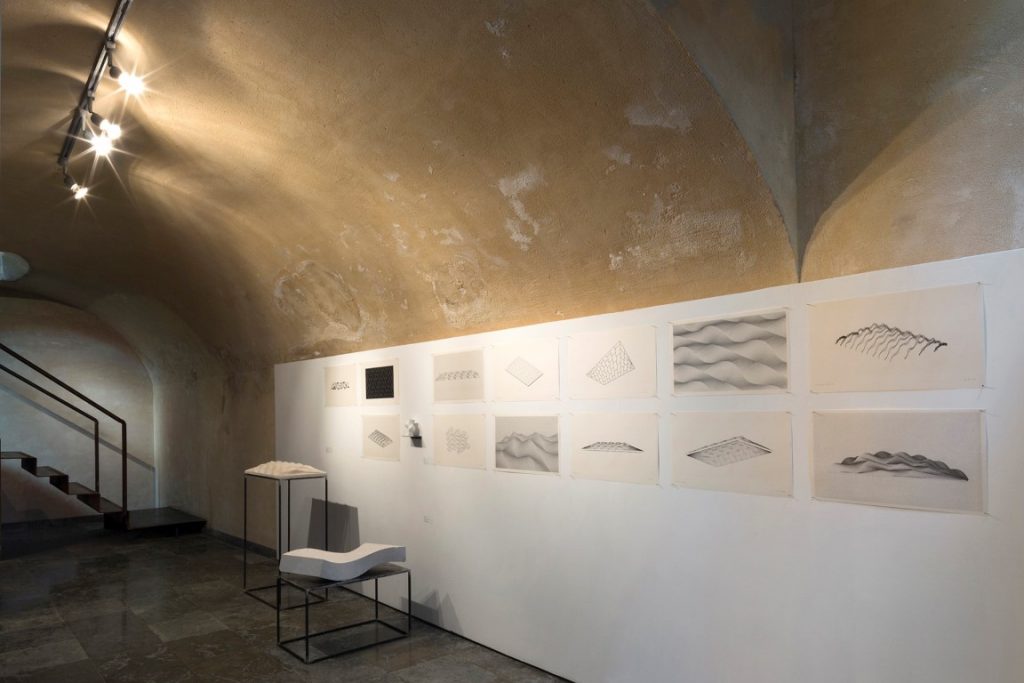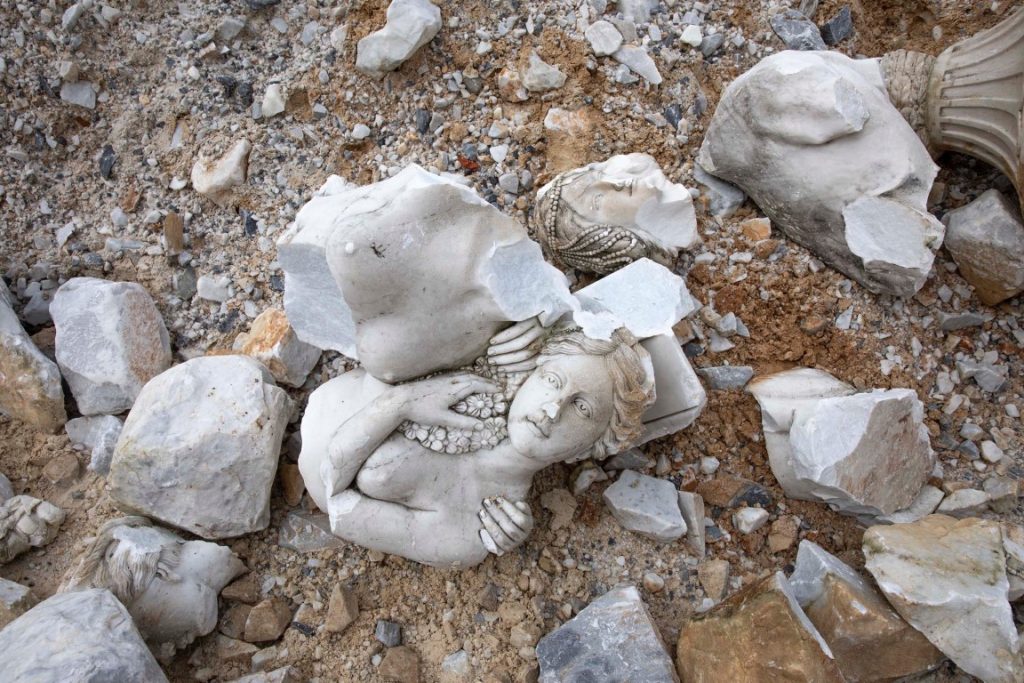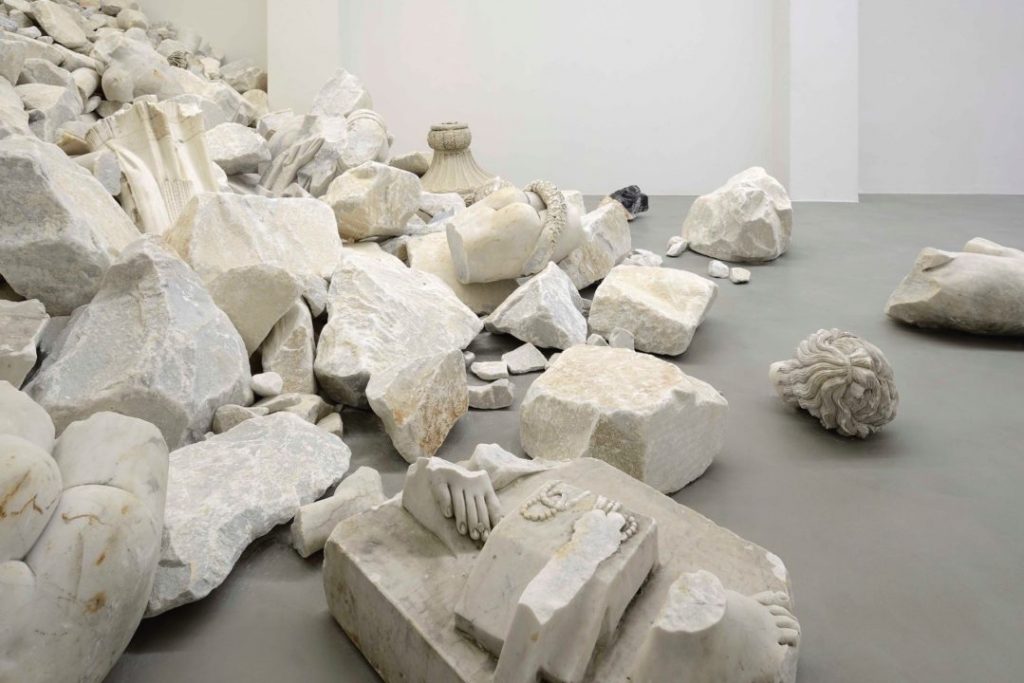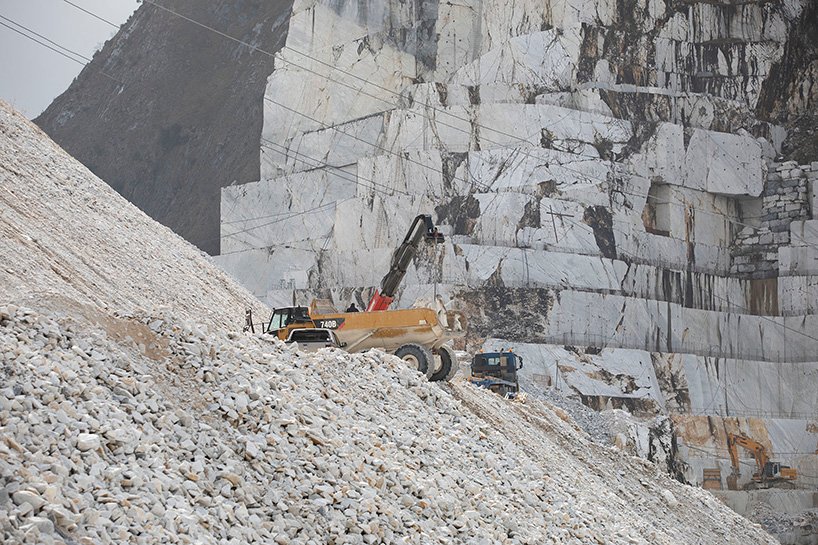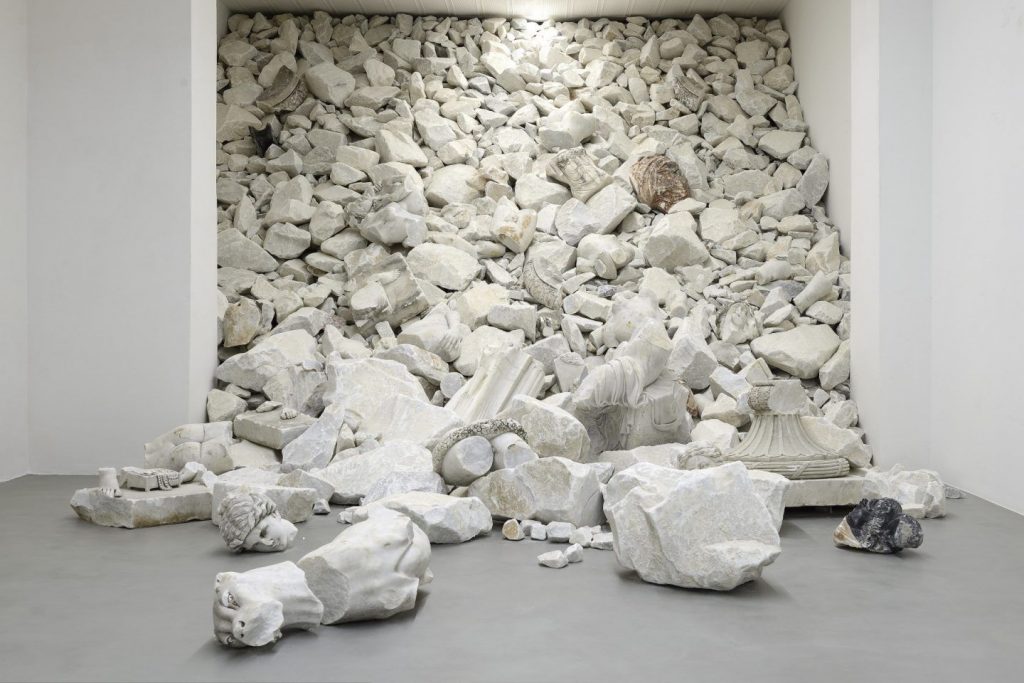Unlike more traditional artistic mediums, the works of which are created independently of their surroundings installations stand out as an art space that relates to its location and feeds on a conceptual infrastructure of sorts. An interdisciplinary approach to art, installations constitute branch of creation that has evolved out of the contributions of artists, designers, and architects. Due to its originality and sense of history, natural stone renders itself an indispensable element in installations a field where material has an important say in all of its conceptual integrity in terms of how it relates with the space. Here are a few installation designs from events and venues both past and present that have etched themselves in mind of their experiences because of how natural stone has been incorporated into them.
2014 Serpentine Gallery Pavilion
Design: Smiljan Radic
Completion Date: 2014
Project Location: London, England
Photographs: Iwan Baan, John Offenbach
Natural Stone: Local natural stone
Designed by Chilean architect Smiljan Radic, the 2014 Serpentine Gallery Pavillion consists of a glass-fibre reinforced plastic shell. Oscar Wilde’s The Selfish Giant inspired Radic to rest this imposing structure over large quarry stones that appear as though they are part of the landscape. On the one hand, they carry the physical weight of the pavilion; on the other hand, their dainty stance juxtaposes that weight. The pavilion’s esoteric form and the Serpentine Gallery’s classic architecture create a powerful physical impact together. Its archaic silhouette makes it appear as though it had emerged out of the Neolithic period. Its design therefore attempts to capture a raw sense of expression. An amberish glow radiates from its delicate, fragile shell thereby catching passers by off guard come night fall. The Pavilion was designed with the intention of being flexible, multi-purpose social space capable of hosting a wide spectrum of art, poetry, music, film, and literature-oriented events.
0121-1110=119031
Design: Jaehyo Lee
Completion Date: 2001-2019
Project Location: South Korea
Photos: Jaehyo Lee
Natural Stone: Local natural stone
South Korean sculptor Lee Jaehyo is known worldwide for his natural stone installations. He interprets Land Art and the modern art school Arte Povera (a.k.a. “poor art”) through his own unique minimalist style. Going against the grain of mainstream organic sculptures as favoured by most sculptors, Lee creates his installations by interlocking pieces of stones without intervening in their texture or structure in any way. Continuity and emptiness thematically dominate his work, which either involve natural stone being hung or piled one on top of another. Lee uses mathematical equations rather than words to title his works. That said, while his work may be large in scale he himself is humble in comparison. The air of aesthetic about his pieces stem from the sense of harmony they generate, and establishes a realistic relationship between themselves and nature. Lee has been creating installations since 1991. The stones he uses in them are sourced from riverbeds and railway tracks as opposed to quarries. His ultimate goal is to use art to strengthen the notion of mirroring nature.
Liquid Marble
Design: Mathieu Lehanneur
Completion Date: 2013
Project Location: Milan, Italy
Photography: Franco Chimenti, Michel Giesbrecht, Ed Reeve
Natural Stone: Marble
Pushing the boundaries of creativity, craft, and technology in all of his designs, Mathieu Lehanneur throughout his career has been major source of inspiration for the modern design world. Lahenneur’s more recent line of natural stone pieces inspired by ocean waves has caught the eyes of many namely ‘Liquid Marble,’ an installation he designed for Turkish Stones and debuted at Milan Design Week. The piece, a 7,5 metre-long green block simply dazzled visitors of the International Garden Festival in France back in 2016, where it was the focal point of castle garden. Mimicking the rippling water as if ruffled by the wind, Liquid Marble creates a sense of ambiguity between liquid and solid form, the result of the coming together of traditional artistry and technological advancement. At the London Design Festival, its last home, the sculpture took on a black marble guise that invited visitors to enter a meditative state. The design was exhibited indoors atop a 30 cm pedestal. It resembles an ocean at night fall, whilst creating the illusion of a surreal “portal”. The series imposes energy, movement, and power onto marble, an otherwise static material. It is the product of Lehanneur’s exhaustive search to find the balance between geometry and organic form.
While We Wait
Design: AAU Anastas
Completion Date: 2017
Project Location: London, England
Photographs: Edmund Sumner
Natural Stone: Limestone
Designed by AAU Anastas, “While We Wait” was built for London Design Festival out of natural stone blocks. The studio’s founders Elias and Yousef Anastas, decided to undertake this installation upon coming to the conclusion that natural stone is popping up in fewer and fewer contrasts, despite the material’s popularity in their country of origin. The project’s wave like form is the result of curved natural stone blocks that, first, were cut by robots, and then assembled using traditional techniques. The finished product not only creates a self-supporting cage system, but is highly aesthetic at the same time. While We Wait features 592 limestone blocks of and representing a spectrum of textures, and that are of Palestinian origin. The installation’s conic form opens towards the sky, and is intended criticize relationship between architecture and nature in the Palestinian context, whilst raising awareness about the region’s cultural heritage sites in the same breath.
Analogy
Design: AAU Anastas
Completion Date: 2018
Project Location: Jerusalem
Photographs: Mikaela Burstow
Natural Stone: Marble
Palestinian architecture firm AAU Anastas’s other installation, “Analogy”, was born out of researching the city of Jerusalem’s basic tectonic elements. The project was debuted at the Jerusalem Show IX back in 2018. In Issue 47 of Natura, we had featured the “Stone Matters” pavilion. “Analogy” is part of that. Form and spatial configurations are handled in such a way through natural stone that the installation proposes a new architectural language for Jerusalem. The designers care about handling architectural elements together through context, and focus on the intrinsic qualities of each archetypal element. Typically composed of a rectangular vaulted system, “Analogy” draws upon the formal and architectural elements historically prominent throughout both local Palestinian structures and modern Renaissance palaces. The simple geometric installation is built of vaults and lintels, and has a curved, ruled top cover with a cumulative natural stone surface. Its form was alludes to 13th century Islamic architecture. The design hopes to explore the potential of the language of local masonry (prominent throughout traditional Palestinian architecture) by brining it together with modern techniques.
Emergences
Design: Fabio Viale
Completion Date: 2020
Location: Florence, Italy
Photos: Lara Facco Press and Communications
Natural Stone: Marble
Made of 15 tones of stone clippings and 10 tones of marble, Fabio Viale’s “Emergences” was the centrepiece of Italian artist’s latest exhibition, Acqua alta Hide Tide. A transposition of the “Root’la” performance held by the artist at the Gioia quarry, the installation creates a highly dramatic tone inside the white space of the gallery. It was during that performance that Viale had dumped sculptures downhill with a crane in the seemingly snow-covered atmosphere of the white marble quarry. He was inspired by Michelangelo’s argument that rolling a sculpture downstream has the purpose of purging it from defects. The disfigured marble the raw element thereof artefacts hailing from the performance were rescued and shown at the gallery, hence the monumental installation’s title “Emergences”. Resembling a 15-meter-long cascading marble waterfall, the installation illustrates a process of decay and reconstruction, of fall and redemption. In Viale’s own words: “The deliberate alteration of the form and surface enhances the vital power inherent in the material.”

